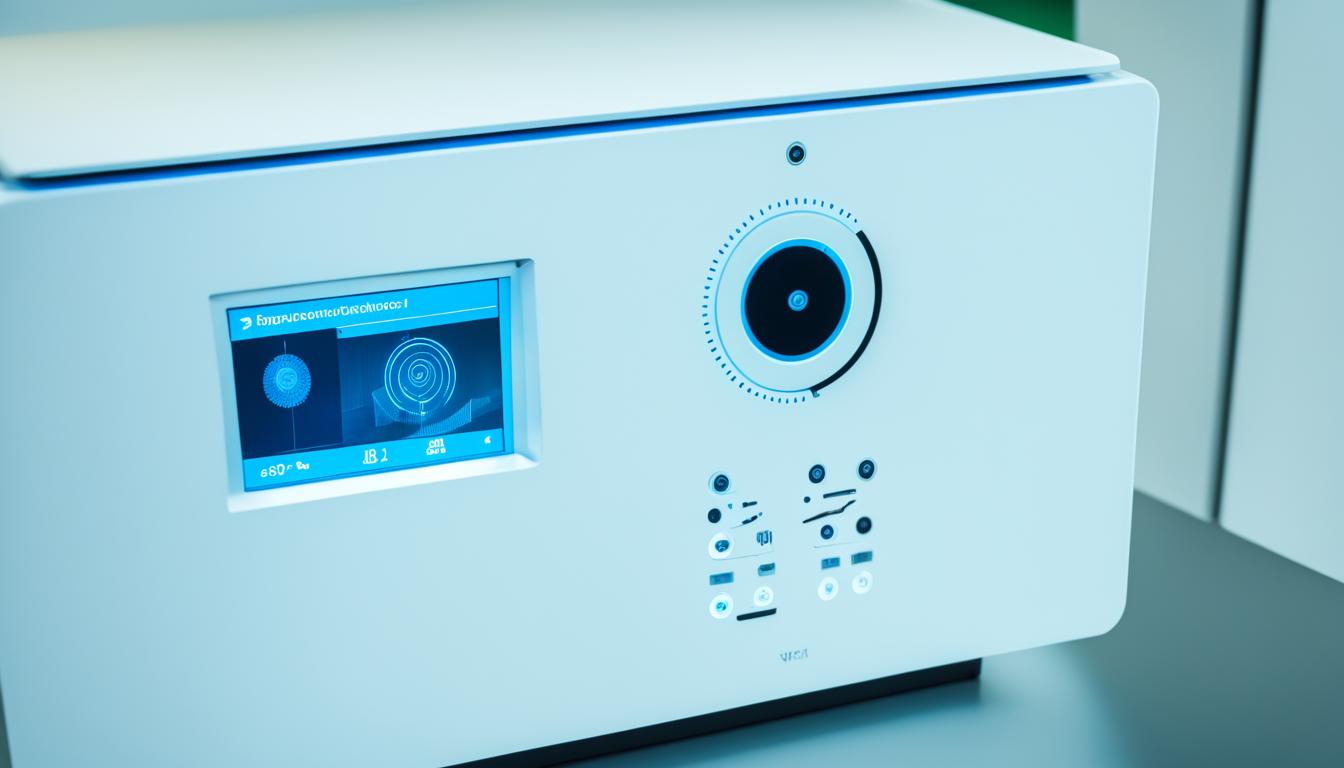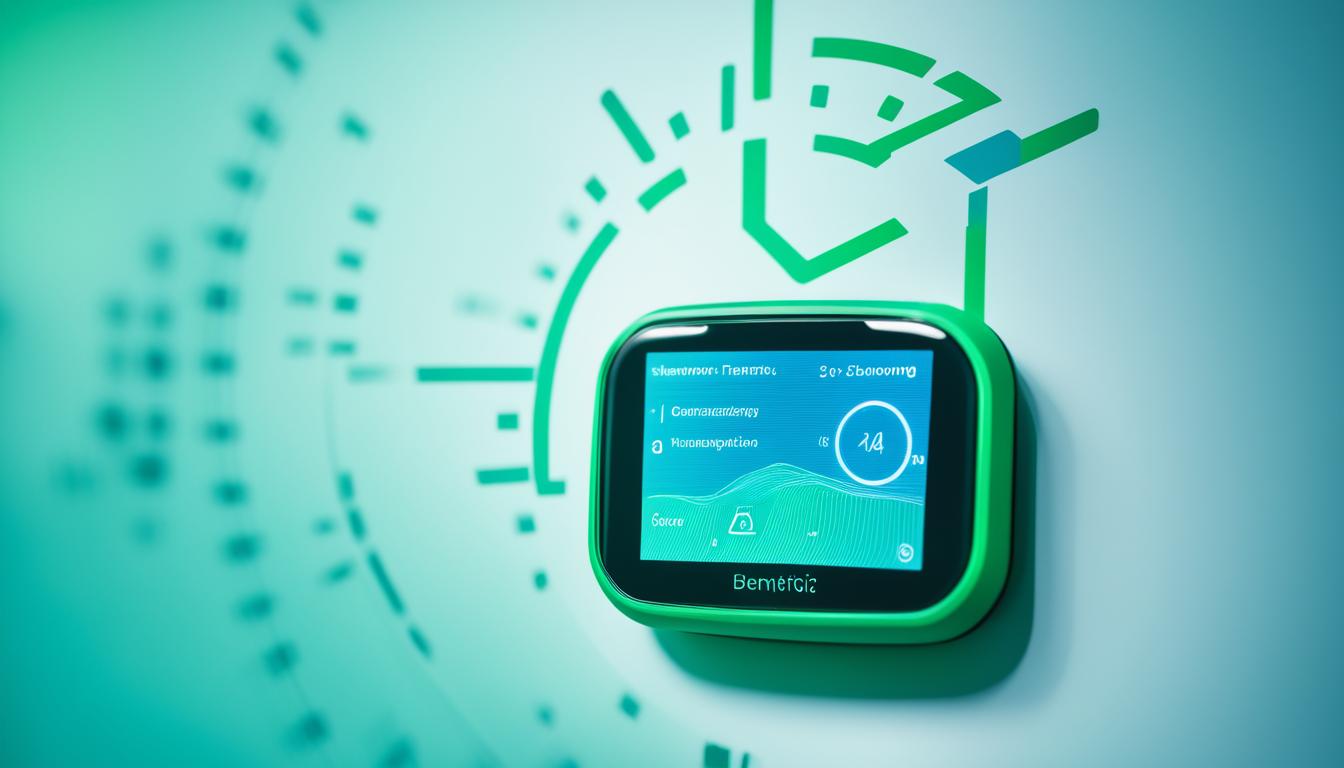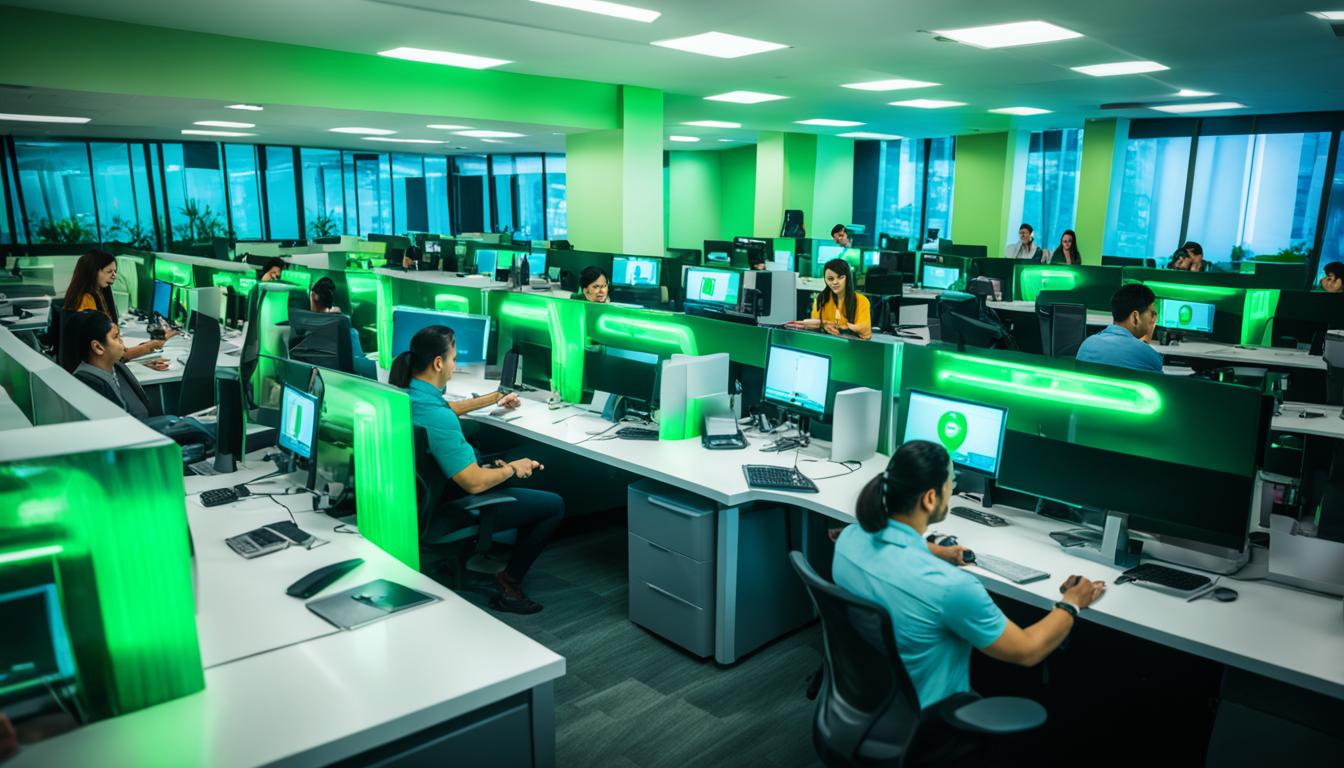Have you ever wondered how biometric timekeeping technology can revolutionize the way businesses track employee attendance? Or perhaps you have concerns about the potential privacy implications of implementing such systems?
Biometric timekeeping has become increasingly popular in the Philippine business landscape due to its ability to provide accurate and secure time tracking. However, it also raises questions about privacy rights and data security. In this article, we will delve into the benefits of biometric timekeeping while exploring the privacy concerns associated with its implementation.
Join us as we navigate the advantages of this innovative technology and address the privacy concerns that come along with it. Find out how biometric timekeeping enhances workforce management, improves accuracy in employee attendance data, streamlines shift management and payroll processing, and enhances overall security.
Additionally, we will discuss the legal implications of collecting and storing biometric data in the workplace, providing insights into Philippine privacy laws and global perspectives on handling biometric data.
Curious about the future of biometric time and attendance systems? We will also explore the exciting world of biometric innovations, including integration with other business systems and the role of artificial intelligence in enhancing accuracy.
Get ready to embrace the benefits of biometric timekeeping while protecting privacy. Let’s delve into this cutting-edge technology and discover how businesses can make informed decisions when adopting biometric timekeeping systems.
Key Takeaways:
- Biometric timekeeping offers accuracy, efficiency, and security benefits for businesses.
- Privacy concerns arise due to the collection and storage of biometric data.
- Biometric timekeeping enhances workforce management and improves attendance tracking.
- Businesses need to navigate the legal implications of collecting biometric data and comply with privacy laws.
- The future of biometric time and attendance systems lies in innovation and integration with other business systems.
Understanding Biometric Timekeeping and Its Advancements
Biometric timekeeping has revolutionized employee time tracking, replacing traditional methods and introducing advanced technologies. This section explores the evolution of employee time tracking and the advancements in biometric technology, including fingerprint-based systems and iris recognition.
The Evolution of Employee Time Tracking
In the past, employee time tracking relied on manual methods, such as punch cards or paper-based timesheets. These methods were prone to errors and time theft, leading to inaccurate attendance records and payroll discrepancies.
With the introduction of biometric timekeeping, businesses witnessed a significant shift in how employee time tracking was conducted. Biometric systems utilize unique physiological or behavioral characteristics of individuals, such as fingerprints or iris patterns, to accurately record employee attendance.
This advancement in technology has eliminated the need for physical timecards and reduced the risk of fraud. Biometric timekeeping systems provide real-time data, ensuring accurate records and facilitating streamlined payroll processing.
Types of Biometric Timekeeping: From Fingerprint to Iris Recognition
Biometric timekeeping encompasses various technologies that use distinctive physiological or behavioral attributes for identification and authentication. Some common types of biometric timekeeping include:
- Fingerprint recognition: This technology captures and analyzes the unique ridges and patterns on an individual’s fingertips.
- Facial recognition: This technology identifies individuals through facial features, such as the shape of the face or specific facial landmarks.
- Iris recognition: This technology analyzes the distinctive patterns found in an individual’s iris, which are complex and highly unique.
- Voice recognition: This technology identifies individuals based on their vocal characteristics, such as pitch, tone, and pronunciation.
- Behavioral biometrics: This technology analyzes an individual’s unique behavioral patterns, such as keystroke dynamics or gait analysis.
Each type of biometric timekeeping technology offers its own set of advantages and considerations, depending on the specific needs and requirements of businesses.
Biometric timekeeping systems have undergone significant advancements, revolutionizing employee time tracking in the workplace. The adoption of these technologies has led to improved accuracy, streamlined processes, and enhanced security. By leveraging unique physiological or behavioral characteristics, businesses can ensure that employee attendance data is reliable and tamper-proof, ultimately boosting efficiency and productivity.
Biometric Timekeeping in the Philippine Business Landscape
Biometric timekeeping has gained significant popularity in the Philippine business landscape, thanks to its numerous benefits in terms of accuracy and security. Many industries in the country have adopted and implemented biometric timekeeping systems, realizing the transformative impact on workforce management and efficiency. Let’s explore some real-life examples of how biometric timekeeping has improved business operations in the Philippines.
In the retail sector, for instance, companies like SM Supermalls have successfully integrated biometric timekeeping systems to track employee attendance. With these systems in place, the accurate tracking of employee working hours has improved payroll processing and minimized discrepancies.
In the manufacturing industry, companies such as San Miguel Corporation have embraced biometric timekeeping solutions to enhance workforce management. By eliminating manual time tracking methods and implementing biometric systems, they have streamlined attendance monitoring and reduced administrative overhead.
Moreover, even in the healthcare sector, biometric timekeeping has revolutionized employee management. Hospitals like St. Luke’s Medical Center have adopted biometric systems to ensure accurate and efficient attendance tracking, resulting in better resource allocation and improved patient care.
These real-life examples from various industries in the Philippines demonstrate the positive impact of biometric timekeeping on workforce management and efficiency. By leveraging this technology, businesses in the country have been able to overcome traditional time tracking challenges and achieve higher levels of accuracy and security.
How Biometric Timekeeping Enhances Workforce Management Solutions
Biometric timekeeping solutions offer numerous advantages for businesses looking to optimize their workforce management processes. By leveraging advanced biometric technologies, organizations can significantly improve the accuracy of employee attendance data, streamline shift management, and enhance payroll processing. Let’s dive into these benefits in detail.
Improving Accuracy of Employee Attendance Data
One of the primary benefits of biometric timekeeping is its ability to enhance the accuracy of employee attendance data. Traditional time-tracking methods, like manual punch cards or digital entry systems, are prone to errors and time theft. With biometric timekeeping, employees are uniquely identified through their individual biometric markers, such as fingerprints, facial recognition, or iris scans.
This ensures that each entry is tied to the correct individual, eliminating the possibility of inaccurate or fraudulent time reporting. By accurately tracking employee attendance, businesses can have confidence in the reliability of their payroll calculations, ensuring fair compensation for their workforce.
Streamlining Shift Management and Payroll Processing
In addition to improving accuracy, biometric timekeeping also streamlines shift management and payroll processing. With biometric solutions in place, businesses can automate the recording of employee clock-ins and clock-outs, eliminating the need for manual data entry and reducing administrative burdens.
By integrating biometric timekeeping systems with payroll software, organizations can streamline the entire payroll process. Attendance data is automatically synced with payroll systems, enabling efficient calculation of hours worked, overtime, and other wage-related factors. This not only saves time but also reduces the potential for errors in payroll calculations.
| Feature | Benefits |
|---|---|
| Accurate Time Tracking | – Eliminates time theft – Ensures accurate payroll calculations |
| Streamlined Shift Management | – Automates clock-ins and clock-outs – Reduces administrative burdens |
| Efficient Payroll Processing | – Integrates attendance data with payroll systems – Reduces errors in wage calculations |
By investing in biometric timekeeping solutions, businesses can not only improve the accuracy of their attendance data, but also streamline shift management and payroll processing. This empowers organizations with efficient workforce management solutions, ensuring fair compensation for employees and smooth operations.
Biometric Technology: Balancing Convenience with Privacy Concerns
Biometric technology has revolutionized access control, offering businesses a convenient and secure way to manage and monitor employee entrances. With features like fingerprint or facial recognition, biometric systems provide a seamless user experience that eliminates the need for cumbersome keycards or passwords. This level of convenience enhances productivity and prevents the risk of lost or forgotten access credentials.
However, the widespread use of biometric technology raises valid privacy concerns. As biometric systems collect and store personal data, there is a need to strike a balance between convenience and privacy, ensuring that employees’ sensitive information is safeguarded.
“At the end of the day, Biometric data are just data and can be breached liked any other data.” – Stephan Neumeier
When adopting biometric technology, businesses should consider implementing the following best practices to protect employee privacy:
- Transparency: Clearly communicate with employees about the collection and use of biometric data. Provide detailed information on how the data will be stored, accessed, and protected.
- Data Security: Implement robust security measures to protect biometric data from unauthorized access or breaches. This includes encryption, secure storage systems, and regular security audits.
- Consent: Obtain informed consent from employees before implementing biometric systems. Clearly explain how their data will be used and give them the option to opt-out if they wish.
- Retention Policies: Establish clear data retention policies that outline the duration for which biometric data will be stored. Once the retention period expires, the data should be securely and permanently deleted.
By adopting these best practices, businesses can ensure that the implementation of biometric technology is both convenient and privacy-conscious.
Comparing Biometric Technologies
| Biometric Technology | Convenience | Privacy Concerns |
|---|---|---|
| Fingerprint Recognition | Highly convenient and widely adopted. | Could raise concerns as fingerprints are unique and can be misused if not properly protected. |
| Facial Recognition | Convenient and non-contact method. Can work well in various lighting conditions. | Privacy concerns related to the capture and storage of facial images. Proper security measures must be in place. |
| Iris Recognition | Highly accurate and secure. Contactless and convenient for users. | May raise concerns related to capturing and storing sensitive ocular data. |
Legal Implications of Biometric Data Collection in the Workplace
Collecting and storing biometric data in the workplace has significant legal implications that businesses need to understand and address. Compliance with privacy laws is crucial, particularly in the Philippines, where specific regulations govern the collection and use of biometric information.
Navigating Compliance with Philippine Privacy Laws
In the Philippines, the Data Privacy Act of 2012 (DPA) is the primary legislation that regulates the handling of personal data, including biometric information. Under the DPA, organizations must ensure transparency, obtain informed consent, and implement appropriate security measures when collecting, processing, and storing biometric data.
Businesses that collect biometric data should understand the specific requirements outlined in the DPA, such as providing individuals with clear notice of the purpose, scope, and duration of data collection, as well as their rights regarding their personal information. They must also establish safeguards to protect biometric data from unauthorized access or disclosure.
Failure to comply with Philippine privacy laws can result in severe penalties, including fines and imprisonment. Therefore, businesses must take proactive steps to navigate compliance with these laws, safeguarding both the privacy of individuals and their own legal standing.
Global Perspectives: How Different Regions Handle Biometric Data
While compliance with Philippine privacy laws is essential for businesses operating in the country, a global perspective is also valuable in understanding how different regions handle biometric data.
Various countries have enacted their own privacy laws and regulations that may impact the collection and use of biometric data. For example, the European Union’s General Data Protection Regulation (GDPR) imposes stringent requirements on the processing of biometric information and grants individuals extensive rights over their personal data.
Other countries, such as the United States, have a patchwork of privacy laws at the state level that may govern the use of biometric data. It is crucial for businesses operating in multiple jurisdictions to be aware of and comply with the privacy laws of each region.
By staying informed about global perspectives on biometric data collection, businesses can develop a comprehensive understanding of the legal landscape and ensure compliance with relevant regulations in different regions.
Advantages of Implementing a Biometric Attendance Tracking System
Implementing a biometric attendance tracking system offers several advantages for businesses. It eliminates time theft and buddy punching, ensuring accurate attendance records. It also enhances security with biometric access control, reducing the risk of unauthorized access.
Elimination of Time Theft and Buddy Punching
One of the key advantages of a biometric attendance tracking system is the elimination of time theft and buddy punching. Traditional timekeeping methods, such as manual punch cards or RFID badges, are susceptible to fraudulent practices and can lead to inaccurate time records. However, with a biometric system, employees need to physically authenticate themselves using unique biometric identifiers, such as fingerprints or iris scans. This ensures that only the authorized individual can record their attendance, eliminating the possibility of time theft or buddy punching. Consequently, businesses can rely on accurate attendance data for various purposes, such as calculating payroll, monitoring employee performance, and maintaining regulatory compliance.
Enhanced Security with Biometric Access Control
Another significant advantage of implementing a biometric attendance tracking system is enhanced security through biometric access control. Biometric identifiers are unique to each individual, making it extremely difficult for unauthorized personnel to gain access to restricted areas. By utilizing biometric technology for access control, businesses can prevent unauthorized entry, protect sensitive information, and maintain a secure work environment. This not only mitigates the risk of security breaches but also instills a sense of trust and confidence among employees and stakeholders.
Moreover, biometric access control systems provide an audit trail, allowing businesses to track and monitor employee movements. This can be useful for internal investigations or resolving any discrepancies that may arise. By maintaining a record of employee access, businesses can establish a transparent and accountable work culture.
| Advantages | Description |
|---|---|
| Elimination of Time Theft and Buddy Punching | Biometric authentication ensures that only the authorized individual can record their attendance, eliminating time theft and buddy punching. |
| Enhanced Security | Biometric access control provides a secure work environment, prevents unauthorized entry, and protects sensitive information. |
Addressing Biometric Data Privacy: Best Practices for SMEs
Ensuring biometric data privacy is crucial, especially for small and medium-sized enterprises (SMEs). To protect the privacy of their employees, SMEs should follow these best practices:
- Data Protection Measures: Implement robust security measures to safeguard biometric data from unauthorized access or breaches. This includes encrypting data, using secure storage systems, and regularly updating security protocols.
- Employee Consent: Obtain informed and voluntary consent from employees before collecting and using their biometric data. Clearly communicate the purpose, scope, and duration of data collection, and provide options for individuals to opt out if they choose.
- Transparency: Be transparent about the collection, storage, and use of biometric data. Clearly communicate privacy policies, data retention periods, and the rights of employees regarding their personal information.
By adhering to these best practices, SMEs can ensure the proper handling and protection of biometric data, promoting a culture of trust, transparency, and respect for privacy within their organizations.
The Future of Time and Attendance Systems: Biometric Innovations
The future of time and attendance systems is being shaped by exciting biometric innovations. With advancements in technology, businesses can expect greater efficiency and accuracy in their workforce management solutions. Let’s take a closer look at two key aspects driving this future: integration with other business systems and the role of artificial intelligence (AI) in enhancing biometric timekeeping accuracy.
Integration with Other Business Systems for Greater Efficiency
In the future, biometric time and attendance systems will seamlessly integrate with other essential business systems, resulting in increased efficiency. By integrating biometric data with HR, payroll, and scheduling systems, businesses can automate processes, eliminate manual data entry, and minimize errors. This integration enables real-time visibility into employee attendance, facilitating effective workforce management and resource allocation.
Furthermore, the integration of biometric systems with access control systems can enhance overall security measures. By tying biometric data to access permissions, businesses can ensure that only authorized personnel can gain entry to specific areas, further safeguarding sensitive information and assets.
The Role of AI in Enhancing Biometric Timekeeping Accuracy
Artificial intelligence (AI) is revolutionizing biometric timekeeping accuracy. AI algorithms can analyze biometric data such as fingerprints, iris patterns, or facial recognition with exceptional precision, ensuring reliable and tamper-proof identification. These advanced systems can adapt to changes in features due to factors like aging, lighting conditions, or minor injuries, enabling accurate recognition even in challenging environments.
AI-powered biometric time and attendance systems can also detect anomalies or irregularities in employee clock-in/out patterns, helping businesses identify potential time theft or buddy punching incidents. With real-time alerts and analytics, businesses can take proactive measures to address these issues promptly, improving overall workforce management and reducing operational costs.
In conclusion, the future of time and attendance systems lies in biometric innovations that integrate seamlessly with other business systems and leverage AI algorithms for enhanced accuracy. These advancements will empower businesses to streamline their workforce management processes, boost productivity, and ensure the highest level of data security. By embracing these innovations, businesses can stay at the forefront of the ever-evolving landscape of time and attendance management.
Conclusion
Embracing the Benefits of Biometric Timekeeping While Protecting Privacy
Moving Forward with Informed Decisions on Biometric Timekeeping Adoption
In conclusion, businesses can reap numerous benefits by adopting biometric timekeeping systems. These systems offer enhanced accuracy, allowing companies to track employee attendance and hours worked with precision. This accurate data leads to improved efficiency in workforce management, ensuring that businesses are utilizing their resources effectively.
Furthermore, biometric timekeeping systems provide an added layer of security. With unique biometric identifiers such as fingerprints or iris scans, unauthorized access is minimized, reducing the risk of security breaches and time theft. Data integrity is also maintained, preventing fraudulent practices like buddy punching.
While embracing the advantages of biometric timekeeping, it is essential for businesses to prioritize privacy. Employee data protection should be a top priority, with compliance to Philippine privacy laws and best practices. Implementing proper data protection measures, obtaining employee consent, and ensuring transparency in data handling are crucial steps in safeguarding privacy.
Before adopting biometric timekeeping systems, businesses should make informed decisions. Conducting thorough research, evaluating the specific needs of the organization, and selecting a reputable vendor are important steps in the adoption process. It is also crucial to educate employees on the benefits and privacy considerations associated with biometric timekeeping, fostering a culture of transparency and trust.
FAQ
What are the benefits of biometric timekeeping?
Biometric timekeeping offers advantages such as improved accuracy, efficiency, and security for businesses.
How has employee time tracking evolved?
Employee time tracking has evolved from traditional methods to more advanced technologies like biometric timekeeping.
What are the different types of biometric timekeeping?
Biometric timekeeping includes fingerprint-based systems and more advanced technologies like iris recognition.
How has biometric timekeeping been adopted in the Philippine business landscape?
Biometric timekeeping systems have gained popularity in various industries in the Philippines, improving workforce management and efficiency.
How does biometric timekeeping enhance workforce management solutions?
Biometric timekeeping improves the accuracy of employee attendance data, streamlines shift management, and enhances payroll processing.
What are the privacy concerns associated with biometric technology?
Biometric technology raises privacy concerns as it collects and stores personal data, which businesses need to address.
How can businesses navigate compliance with privacy laws when collecting biometric data?
Businesses in the Philippines need to comply with privacy laws and should be aware of how different regions globally handle biometric data.
What advantages does implementing a biometric attendance tracking system offer?
Implementing a biometric attendance tracking system eliminates time theft and buddy punching while enhancing security.
What are the best practices for small and medium-sized enterprises (SMEs) to address biometric data privacy concerns?
SMEs should implement data protection measures, obtain employee consent, and prioritize transparency to protect biometric data privacy.
What does the future hold for time and attendance systems?
The future of time and attendance systems lies in biometric innovations, including their integration with other business systems and the use of AI to enhance accuracy.





